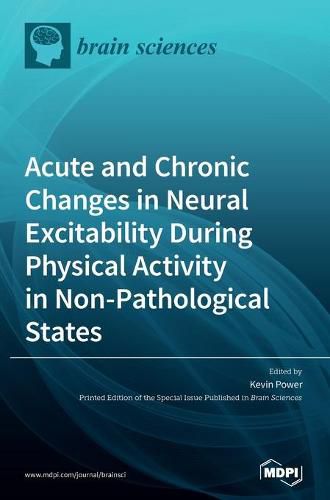Readings Newsletter
Become a Readings Member to make your shopping experience even easier.
Sign in or sign up for free!
You’re not far away from qualifying for FREE standard shipping within Australia
You’ve qualified for FREE standard shipping within Australia
The cart is loading…






This title is printed to order. This book may have been self-published. If so, we cannot guarantee the quality of the content. In the main most books will have gone through the editing process however some may not. We therefore suggest that you be aware of this before ordering this book. If in doubt check either the author or publisher’s details as we are unable to accept any returns unless they are faulty. Please contact us if you have any questions.
Neural control of human motor output and how it is modified by alterations in physical activity levels is complex and multidimensional. The use of various experimental designs has vastly increased our knowledge of how the nervous system integrates descending, segmental, and ascending information to produce motor outputs, yet there is still much to learn. A more complete picture of the neurophysiology underlying the control of human motor outputs may prove useful in guiding rehabilitation programs aimed at reducing motor impairments following disease or injury. The purpose of this Special Issue is to collect original articles that explore neural excitability in various states. Studies examining neural excitability on a moment-to-moment basis (acute) or following prolonged periods of exercise or skill training and disuse (chronic) are encouraged. Original research studies using various experimental measures (e.g., transcranial magnetic stimulation, transmastoid electrical stimulation, single motor unit recordings, electroencephalography, and measures of spinal reflexes) in various states (e.g., fatigued, non-fatigued, and resting) during different types of motor outputs (tonic or dynamic) are encouraged. Experimental studies and literature reviews are welcome.
$9.00 standard shipping within Australia
FREE standard shipping within Australia for orders over $100.00
Express & International shipping calculated at checkout
This title is printed to order. This book may have been self-published. If so, we cannot guarantee the quality of the content. In the main most books will have gone through the editing process however some may not. We therefore suggest that you be aware of this before ordering this book. If in doubt check either the author or publisher’s details as we are unable to accept any returns unless they are faulty. Please contact us if you have any questions.
Neural control of human motor output and how it is modified by alterations in physical activity levels is complex and multidimensional. The use of various experimental designs has vastly increased our knowledge of how the nervous system integrates descending, segmental, and ascending information to produce motor outputs, yet there is still much to learn. A more complete picture of the neurophysiology underlying the control of human motor outputs may prove useful in guiding rehabilitation programs aimed at reducing motor impairments following disease or injury. The purpose of this Special Issue is to collect original articles that explore neural excitability in various states. Studies examining neural excitability on a moment-to-moment basis (acute) or following prolonged periods of exercise or skill training and disuse (chronic) are encouraged. Original research studies using various experimental measures (e.g., transcranial magnetic stimulation, transmastoid electrical stimulation, single motor unit recordings, electroencephalography, and measures of spinal reflexes) in various states (e.g., fatigued, non-fatigued, and resting) during different types of motor outputs (tonic or dynamic) are encouraged. Experimental studies and literature reviews are welcome.